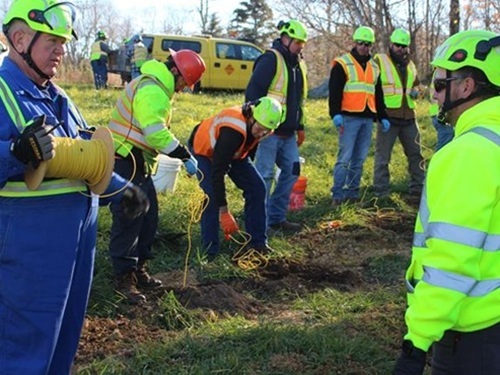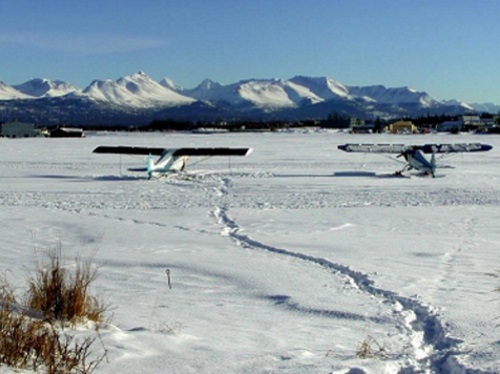The Federal Aviation Administration recently released an 85-page report on how to increase aviation safety in Alaska after a yearlong, sweeping study of safety issues specific to the challenges of flying in Alaska, where more than 80 percent of its communities are accessible only by air.
[Above photo by Dave Krause, Alaska DOT&PF]
The FAA said it is also developing a “roadmap” for implementing the report’s recommendations in the near- and mid-term, focusing on initiatives with the greatest safety benefits.

“Alaska depends on aviation more than any other state, and we are committed to doing everything possible to make flying safer,” noted FAA Administrator Steve Dickson in a statement.
“We teamed up with the flying community and together developed this comprehensive blueprint for our safety work going forward,” he said.
The FAA’s report made five primary recommendations:
- Install Automated Weather Observing Systems or AWOS technology at airports that do not have them and where the systems would have the biggest safety benefit, and continue testing a new technology called Visual Weather Observation System.
- Develop a comprehensive Alaska airspace navigation strategy, including creating lower-altitude flight routes and improving GPS backup systems.
- Continue a collaborative working group initiative in partnership with the Aircraft Owners and Pilots Association; a partnership that verifies and adds mountain pass information on aeronautical charts, and continue to hold FAA bi-annual charting meetings, allocating time for Alaska-specific discussions.
- Continue efforts to expand ADS-B services to areas that do not have it, and continue outreach efforts to encourage operators to equip their aircraft with ADS-B.
- Continue existing safety outreach programs and look for new opportunities where different FAA divisions could work together to address safety issues from multiple perspectives.
In addition to identifying key safety needs, the report cites successful FAA initiatives, including the agency’s weather-camera system and efforts that greatly reduced safety incidents around Bethel Airport.
The report also highlighted the agency’s plans to install additional AWOS systems at airports where airport sponsors request them using funding from FAA’s Airport Improvement Program.

The FAA said it expects to have a draft of its roadmap completed by mid-February 2022 and will then seek Alaska aviation stakeholder feedback on the roadmap through May 2022. The agency expects to submit a progress report on its Alaska aviation safety initiatives to industry stakeholders by September 2022.
In 2019, a study compiled by the Alaska Department of Transportation & Public Facilities indicates the state’s aviation industry supports more than 35,000 jobs statewide and adds more than $3.8 billion annually to its economy.
That report also noted that aviation is key to linking many of Alaska’s communities, noting that 82 percent of them are only accessible by air.
That report – entitled the 2019 Economic Contribution of the Aviation Industry to Alaska’s Economy – added that in Anchorage, one in 10 jobs are attributed to the Ted Stevens Anchorage International Airport, while in Fairbanks, one in 13 jobs are attributed to Fairbanks International Airport.
 States
States
NCDOT Staff Participate in ‘Explosive’ Technical Training
December 19, 2025 States
States

